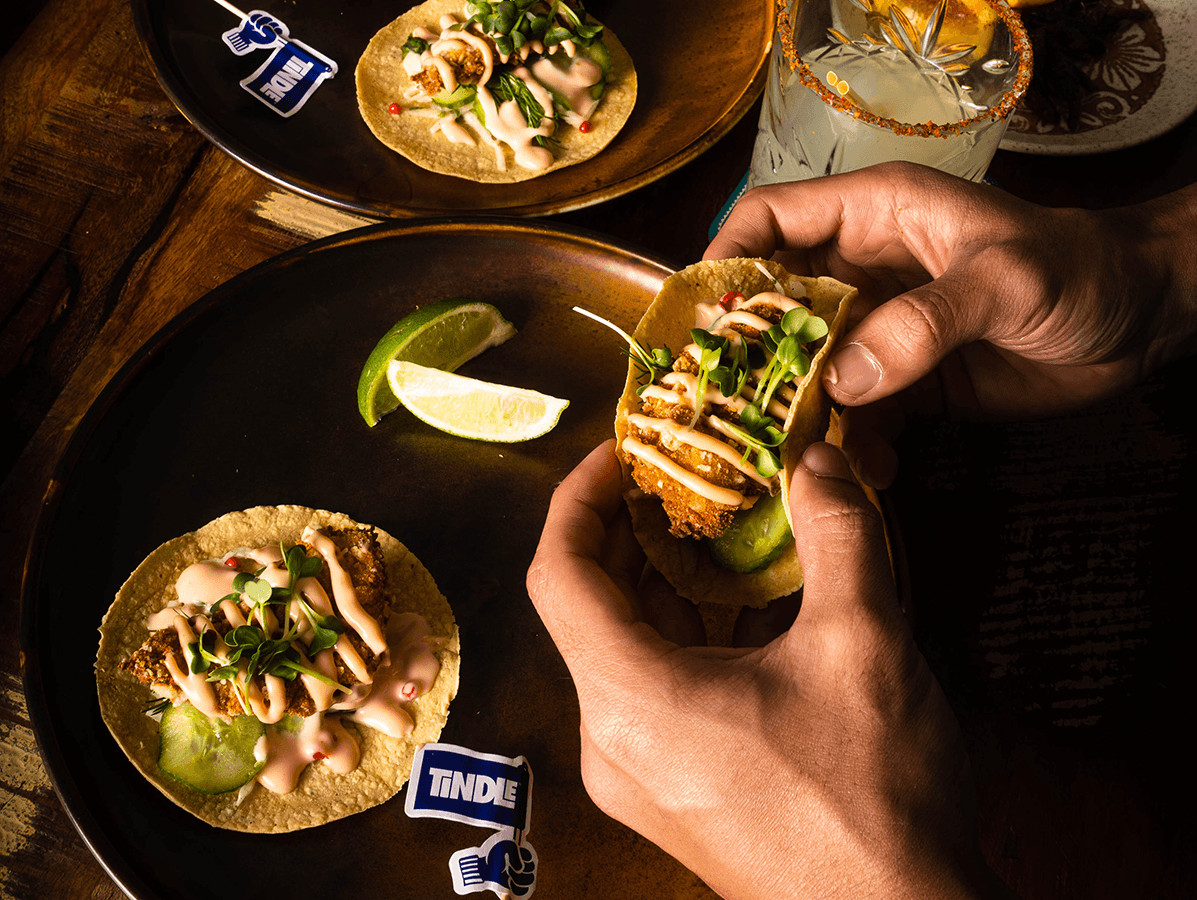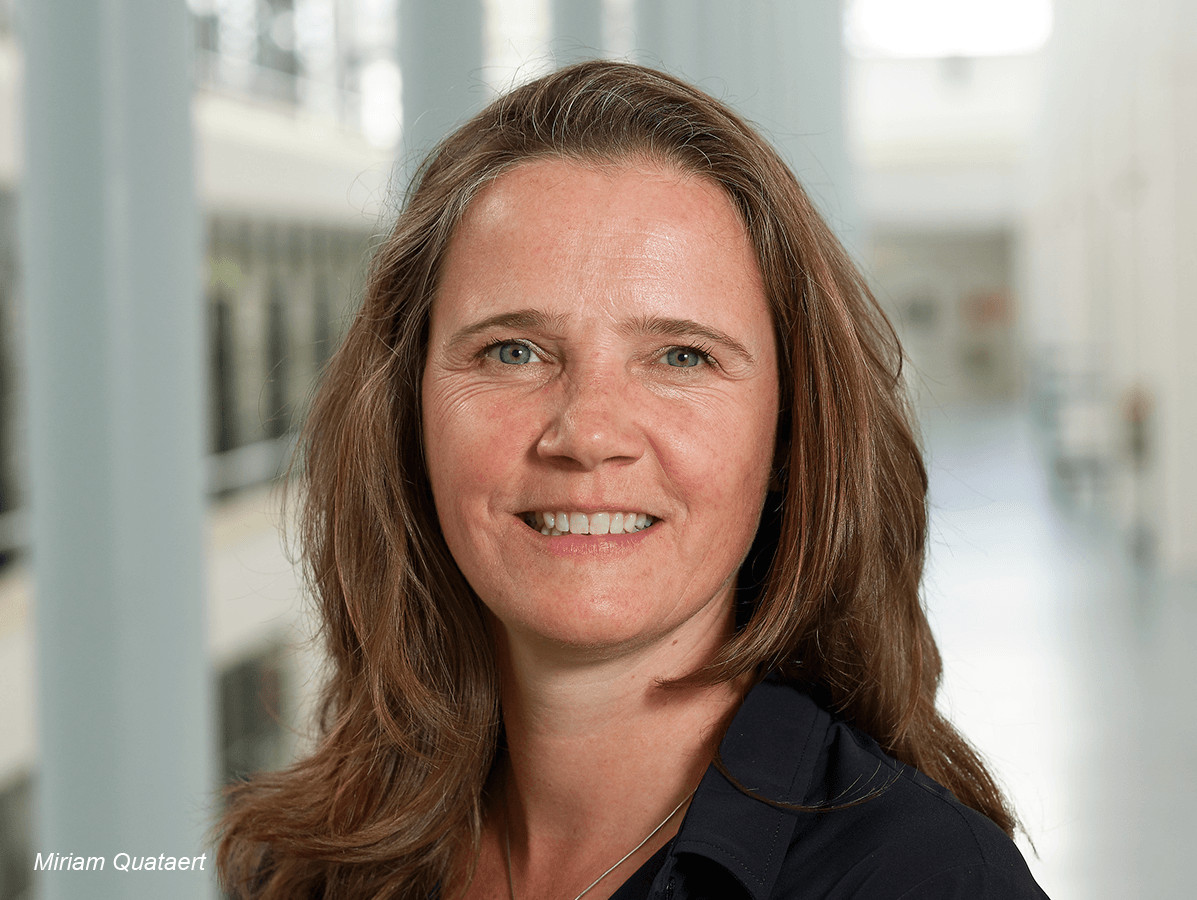
Change is not easy, innovation is always a challenge. It's far from easy. Yet that is precisely the world that food technologists and food designers dive into every day. The demands are great: food has to be more sustainable, healthier, safe and tasty. The protein transition offers plenty of opportunities. Who wouldn't want to benefit from them?
Next Gen Foods produces vegetable chicken: TiNDLE, recently introduced in six restaurants in Amsterdam and in the two-star restaurant Aan de Poel in Amstelveen. This product has the taste and bite of a juicy piece of chicken meat with nice long fibres. It was first served in a handful of restaurants in Singapore less than a year ago and has since been used in more than 400 restaurants in the United States, Asia, the Middle East and Amsterdam. John Seegers, Chief Technology Officer, is the mastermind behind the vegetarian chicken. The ingredients: water, soya, wheat gluten, wheat protein, Lipi™, coconut fat, methylcellulose and oat fibre. "Lipi is our secret ingredient," he explains. "It's a blend of sunflower oil with natural flavouring that creates a kind of plant-based chicken fat."
Also joining them is Miriam Quataert, Product Development and Application Expertise Leader at Wageningen Food & Biobased Research. She works with food industry companies in Wageningen researching ingredients, recipes (also for composite food products) and the properties of ingredients; in short, the total product matrix. "I think it is very important that people have access to healthy food and I want to make a contribution to that," she says. "If you understand a product intrinsically and can unravel it, you can also set good guidelines on how to improve it. It fascinates me to see how much faster you can develop and redesign."
Marc Veltman, taste expert, food designer & innovation broker and owner of Puur Veltman, is the third participant in the discussion. "I help companies discover where the pure essence of their product innovation issue lies, by going through different innovation techniques with them. My drive is to increase the innovation power in organisations."
"My experience is that many companies have temporarily put their R&D on the back burner," Marc answers: "Keeping the daily production running, especially in 2020, was often difficult enough."
"We took and still take potential investors to restaurants, where a chef makes dishes with our product," John looks back. "We also hold screening sessions with our investors and talk about our strategy. In short: we take care of the development, quality control, marketing and sales. We outsource the production of our raw materials according to our specifications.
Miriam: "I believe that because companies were more forced to rely on themselves, there was also much more thought given to new developments. Every crisis, including the current geo-economic situation, leads to a push. A crisis triggers new developments to meet the challenges we face."

One of those challenges is to make our food supply healthier. This year, the 'National Product Improvement Approach' starts. The government's goal is to accelerate improvements in the composition of processed foods. For a wider range of healthy and tasty products, product innovations are needed that tempt consumers to make healthier choices and meet their needs or those of special target groups', says the Ministry of Health, Welfare and Sport (VWS). This means there is work to be done for R&D teams, food technologists and scientists.
The report 'New criteria for product improvement. Salt, saturated fat and sugar levels for food groups' describes the limit values for these ingredients in detail. For each substance, three categories have been formulated in the 'National Product Improvement Approach' (NAPV) ('low', 'medium' and 'high') to enable manufacturers to improve their products step by step. These are products to which salt or sugar has been added, or where the amount of saturated fat can be reduced. In 2030, the goal of VWS is that 50% of the products per product group must fall in the best category. No more than 10% may belong to the worst category in terms of quantity of salt, sugar or saturated fat. John is doing well with TiNDLE, which is in the best category: "We are at 180 milligrams for the sodium content. We don't add sugar. Total fat is 5 grams. Saturated fat is 1.9 grams. It is a vegetarian product, so it does not contain cholesterol. In Asia and the US, you also have these kinds of guidelines. It comes down to the same things everywhere."
Miriam: "It is likely that a group of consumers will make more conscious choices on the basis of the Nutri-Score. Food companies will then actively reformulate their products for a better Nutri-Score. As far as the NAPV is concerned, companies whose products are still in the bottom 75% or have a C or D score will have to work hardest. At the same time, it is precisely these first reduction steps that are relatively the easiest to achieve. A great deal of specific knowledge and expertise is required for the subsequent steps. Incidentally, when developing new products it is also wise to take the VWS guidelines into account right from the start. If you make sure that your innovation is in the top 25 right away, that prevents a lot of extra work in the future."
Although Marc helps companies to obtain a better Nutri-Score for their product, he is still sceptical. "I think the big A-brands are hardly going to make the majority of their products healthier. The majority of A-brand products in the supermarket are bad food. I do not expect this to change significantly because of a Nutri-Score or the NAPV. The corona crisis has caused a group of people to start eating more healthily, but the vast majority will continue to eat frankfurters and tinned soup; we should have no illusions about that. Moreover, making products healthier is difficult and everything has a price. If we really want to make a change, we need to completely transform the existing business model. Otherwise it will not work.

Marc: "That is correct. The vast majority of the population does not like big changes at all. Here, the 80-20 rule applies: never change more than 20%; 80% must remain seriously recognisable and familiar, otherwise people will completely lose their way. Besides, it is not easy to really change the taste profile you grew up with. There are very few people who can taste culinary.
Consumer acceptance is therefore an important part of success. It is essential to know your target group well. Miriam: "How do you ensure that a reformulated product appeals to the consumer? Start by identifying factors that play a role in consumer acceptance. You take these insights with you into account in the redesign process. And perhaps to an appropriate packaging design, because the packaging also plays a role in sweetness perception and consumer acceptance."
The importance of target group research is explained by John Seegers. Initially, they made ready-made products such as schnitzels, nuggets and chicken burgers, but their target group, the chefs, were not interested. "It turned out they wanted to cook for themselves! So the idea was born to create a product that the chefs could use to make their own creations: from tacos and satay to roulades. The choice to start in Singapore was a very conscious one. There are so many restaurants here of all nationalities. Therefore, there is a lot of room for experimentation in terms of shape and taste.
Marc emphasises that this is why it is so important to put together a multidisciplinary team that includes not only food technologists, but also quality, purchasing, marketing and sales.
"It is important that there is someone in the team who has an oversight," adds Miriam. "And someone who can properly assess the risks that come along. We make risk analyses for companies. The aim is for them to develop their product as well and as efficiently as possible.
Marc: "Sometimes innovation projects get stuck, in that case it can be useful to have someone from outside the team look at the process. Innovation is also about looking at products and processes through different perspectives. I have experienced that a process got stuck because someone didn't dare to cut the cord on an important decision. Or a certain raw material turned out to be difficult to obtain. Troublesome miscommunications are also a regular occurrence, especially in this digital age. My advice: if you need to communicate something emotional or complicated, do it face-to-face and not via e-mail or chat. Talk to each other! And remain curious, dare to take risks."

Miriam: "Before you leave out a particular substance in a foodstuff, you need to know what its functionalities are. What other ingredients can you replace it with? How do you deconstruct a food product? How do you choose the right ingredients to rebuild the product? Based on models, we can predict what changes, and therefore what you can improve, when an ingredient, process parameter or recipe changes. Reformulation affects many facets."
Marc: "Exactly! If you leave out salt, it doesn't just affect the shelf life. If the THT drops from 60 to 10 days, you also have a serious logistical problem. Sometimes you can't avoid adding E-numbers as a replacement; you don't want people to get sick from the product.
Miriam agrees: "Sugar, salt and fat are not easy to replace. It is precisely these ingredients that provide taste, volume and shelf life. Consumers do not want to make concessions in these areas. That makes finding alternative ingredients a challenge. Moreover, sugar is a bulk substance and relatively cheap. Substitution always makes a product more expensive. Sugar also provides texture and binding. If you remove it from the recipe, you have to absorb those functionalities. To speed up that process, we have developed the Sugar Reduction Tool for bakery products. You enter the original recipe and all your wishes: how much sugar do you want to reduce? Which substances do you want to include or exclude? The result is a new recipe that R&D can start working with. Such a tool is not yet available for salt reduction. However, a Public Private Partnership project is starting this year to improve the salt content of soups and sauces: Shift Salt."
Marc: "I did discover that replacing salt with another ingredient can have very surprising effects. For example, I'm working on a salt substitute in a tomato sauce. It enhances the other natural flavours. You can taste the tomatoes, onion and herbs better now. That's what I like about my job."
Miriam: "Certainly! Know what hurdles you can run into during the innovation process: which pathogens pose a risk and can be eliminated or dealt with in the food products? Make sure to start in time. Money is number one in product development, but taste is the key to success. A major challenge in the development of plant-based products is that the raw materials have a completely different taste palette than animal proteins. You have to deal with all kinds of 'off flavours'."
Marc: "Soy also used to have an off-flavour. Major steps have already been taken to improve this. A new challenge is insect protein, also an upcoming ingredient. Years ago, I worked on a project in which we made flour from insect protein from larvae. The idea was good, but the taste was not: it was really bad. You could taste the manure in the flour they had lived on. So they started cleaning the manure. That helped, the taste improved. But because of all the research and modifications, the product was no longer affordable.
Miriam: "A lot of research is being done, we're constantly looking for solutions; how we can prevent or mask the often bitter aftertaste of pea protein, in cultivation and processing. How we can accelerate innovation processes through digitalisation. How we can use residual flows. Some techniques are still in their infancy, such as shear cell technology and 3D food printing; others are already maturing. Look at PEF, the hop-pressure pasteurisation technique co-developed by the WUR. It is now widely used in industry in all kinds of fields. The development and scaling up of a technology takes time. But once there is a breakthrough, things happen fast."
Source: Vakblad Voedingsindustrie 2022